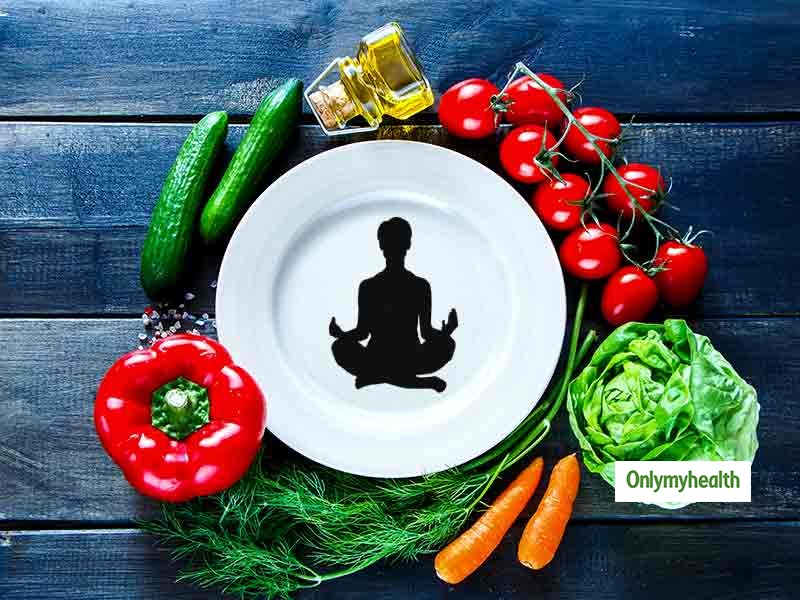
A Yogic diet is a balanced diet that ancient Yogis believed which had a huge influence not only over the physical well-being, but also over the thoughts, and ultimately the emotional and spiritual well-being of a person. This diet can also be called lacto-vegetarian, which means that it is made up of non-animal foods with the exceptions of dairy items and honey.
With continued awareness about the body through yoga you may find that vegetarian foods become a natural choice. It can also help you maintain the same energized, light feeling that is achieved through yoga.

On your spiritual journey you may find your love for ahimsa or non-violence outweighs your need for animal foods. Vegetarian foods can help you attain a higher level of spirituality by generating positive energy, since the non-vegetarian foods lose their prana much faster after dying, while vegetarian items retain them longer.
Also read: 4 Unusual Benefits of a Foot Massage
Many believe it’s difficult to switch to a non-animal diet. However, you don’t have to stop eating animal-food all at once. Gradually reduce these foods from your diet. An omnivorous diet, however, doesn't mean you can't practice yogic way of eating. Honour the food you eat, pick freshest meat choices raised ethically, locally and in free environment. Use its pranic force to heal and strengthen yours.
In yogic literature, foods beneficial to us are said to be Sattvic, or pure. Sattvic foods form an ideal diet, keep the body nourished while being easy to digest. They create new energy, clarity and a clear, calm mind, enabling us to use all our mental, physical, and spiritual abilities. Sattvic foods include cereal, fresh fruit and vegetables, milk, butter, nuts, seeds, lentils, rice, grains and honey.
Also read: Burnout is A Real Health Syndrome, Says WHO. Here are Ways to Tackle a Burnout
Impure foods that can upset our physical or emotional balance are referred to as being Tamasic (stale) and Rajasic (stimulating). Too much of these foods can cause restlessness, agitation and a distracted mind, increase dullness or hyperactivity. Foods in this category are sour or pungent foods, like onions, garlic, curry, fish, meat, eggs, salty or spicy foods and beverages, such as alcohol, coffee and black teas.
But maintaining a diet that keeps your body light and your mind clear doesn't necessarily mean eating only sattvic foods. The body, as per Ayurveda, is made of three doshas- vata, pitta and kapha. Vata constitution has physical and mental qualities reflecting the elemental qualities of Space and Air, and are thin, fast moving and quick thinking. Pitta personalities reflect qualities of fire and have fiery personalities and oily skin. Kapha type and have solid body frame, calm temperament, reflecting elements of Earth and Water.
The doshas should ideally be present in an equilibrium. An excess or decrease of any of the doshas will lead to an imbalance leading to disease. What is best for you and support your yoga practice is informed by your prakriti ie your body’s constitution, and your vikriti ie your current imbalances.
Fating is a big part of the yogic way of eating. Ensure you fast at least once a week, eat either light meals of raw fruits and milk, or stay on a water fast.
Inputs By: Dt. Shikha Mahajan, Holistic Nutritionist, Diet Podium
How we keep this article up to date:
We work with experts and keep a close eye on the latest in health and wellness. Whenever there is a new research or helpful information, we update our articles with accurate and useful advice.
Current Version